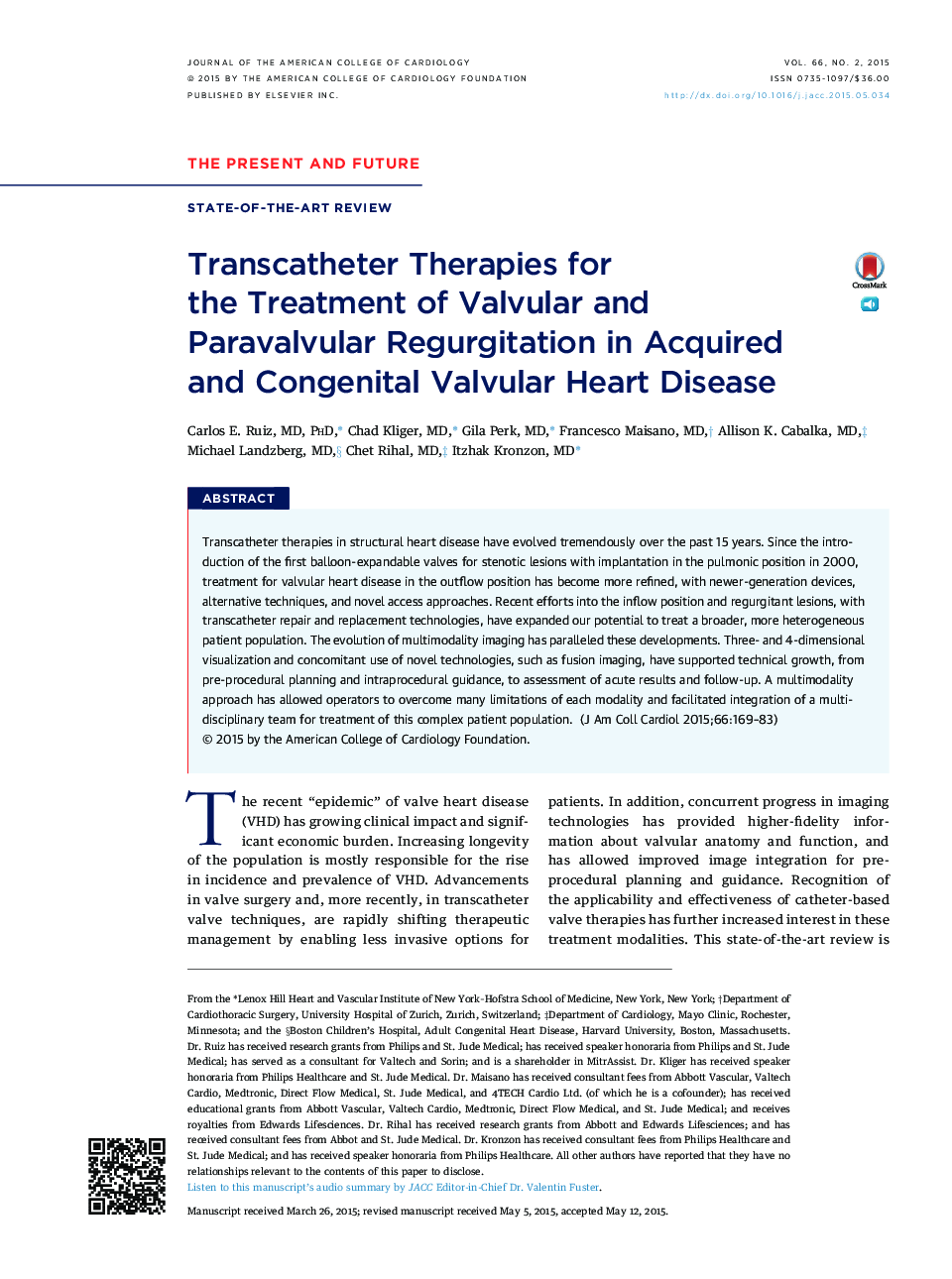| Article ID | Journal | Published Year | Pages | File Type |
|---|---|---|---|---|
| 2943592 | Journal of the American College of Cardiology | 2015 | 15 Pages |
Transcatheter therapies in structural heart disease have evolved tremendously over the past 15 years. Since the introduction of the first balloon-expandable valves for stenotic lesions with implantation in the pulmonic position in 2000, treatment for valvular heart disease in the outflow position has become more refined, with newer-generation devices, alternative techniques, and novel access approaches. Recent efforts into the inflow position and regurgitant lesions, with transcatheter repair and replacement technologies, have expanded our potential to treat a broader, more heterogeneous patient population. The evolution of multimodality imaging has paralleled these developments. Three- and 4-dimensional visualization and concomitant use of novel technologies, such as fusion imaging, have supported technical growth, from pre-procedural planning and intraprocedural guidance, to assessment of acute results and follow-up. A multimodality approach has allowed operators to overcome many limitations of each modality and facilitated integration of a multidisciplinary team for treatment of this complex patient population.
